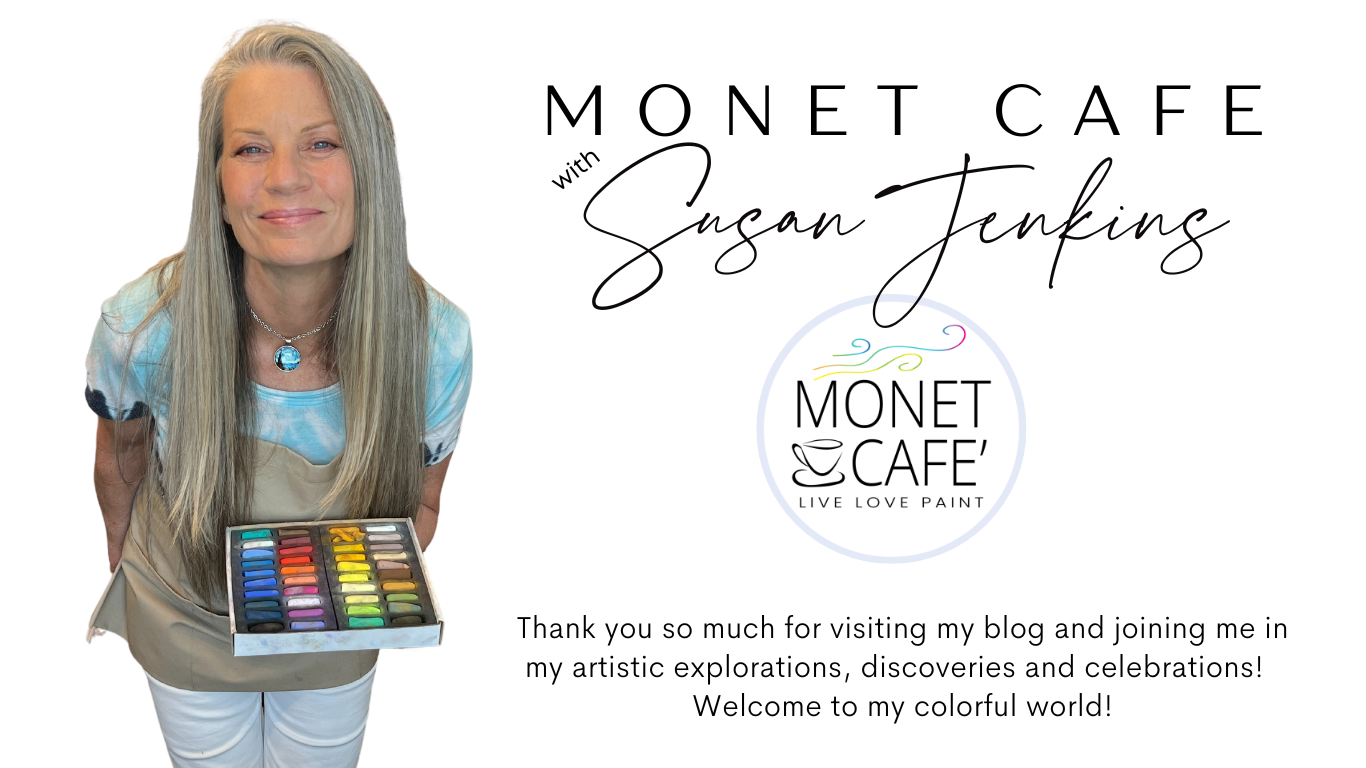How to Paint with Exciting Color!
NEW and EXCITING Color
Make Use of Those Seldom or "Never" Used Pastels!
This tutorial should be a lot of fun and educational. We're going to experiment with color. So get ready to take out some pastels that you don't use very often.
I've decided to focus on using creative colors,and grabbing some of those colors you don't usually use. Have you ever noticed how, as artists, we become somewhat conditioned to the colors we choose? In this lesson, I mostly focus on using colours from the Sennelier "Paris Collection" set.
The reference image is from Unsplash, and the photographer is Andreas Fickle. It's an excellent resource for copyright-free reference images.
Use color to your advantage.
After blocking in a few simple colors to suggest the sky and two mountain shapes, I begin to block in the trees. I use a lovely dark forest green from the Sennelier Paris Collection set.
When Painting evergreen trees I frequently make zigzag patterns. We often feel we compelled to paint every leaf, branch, and flower as artists, but it is truly better to simply suggests elements when painting. Our minds are incredible and can interpret things without much information. When we suggest things, and it often looks more painterly and beautiful than when we spell everything out.
I noticed that some of my warm orange colors and interesting greens were hardly or perhaps never used. So I used some oranges to block in a base color for the grasses, afterall, the ground (or dirt) is typically earthen-colored and warm. And there are some places where the ground is actually red clay, especially in North Georgia.
After laying down some of the forest green in the foreground, I decided to use this exciting color that I had never used. It's a bit of a mustard color. I didn't precisely reproduce colors in the reference image, but you don't have to, as long as you get the correct values. I was definitely enjoying this experiment!
Here is a green I had never used. I think I probably felt it was too vibrant for many of my paintings, but it appeared alive and beautiful as I added it to the warmer first layers.
This is a very neutral green that I had used before, but I used it here to tone down some of the previous vibrant green. I love how we can created new colors by gently layering two or more pastel colors.
This is a Terry Ludwig pastle from the Terry Ludwig "Darks" set. I do often use this color, but I need a dark value to lay down for the flowers.
This is a pink I had used before, but perfect for the general color of the pink flowers.
And look at this vibrant color! This is a Schminke pastel I had never used, probably because it's so vibrant. It thought it was a unique color in between red and pink.
I loved this teal color which was perfect for adding to the base of the first mountain range.
I find that I don't use a lot of browns, and I had definitely never used this one. It was a great color to represent some of the dead or dying flower heads and old grasses.
This never used tan color added a nice highlight to the previously added brown.
I'm using the same neutral green here scumble amoung the grasses.
And look at this interesting orange, somewhat "tumeric" color... definitely unique.
This yellow-green is another never used color that was perfect to add some goldenrod flowers to the scene.
So I hope my experiment will encourage you to try this yourself, and give those poor little neglected pastels some much needed attention.
This is the final painting that I added a bit of fixative to in the foreground (to deepen the grasses) and added a bit of a purple glaze on top to bury some of the flowers and grasses.
I hope you enjoyed and you can watch the full REAL TIME tutorial here:
How to Make Exciting Color Choices
If you recreate from my tutorials or blog posts and share on social media,

.png)

.png)








This is gorgeous-
ReplyDeleteHow do you glaze with pastel?
Thanks, Jana. With soft pastel it's really about some light layering if you want to glaze color and value. I just simply lay a pastel on it's side and make gentle strokes to get something similar to a glazing effect.
Delete